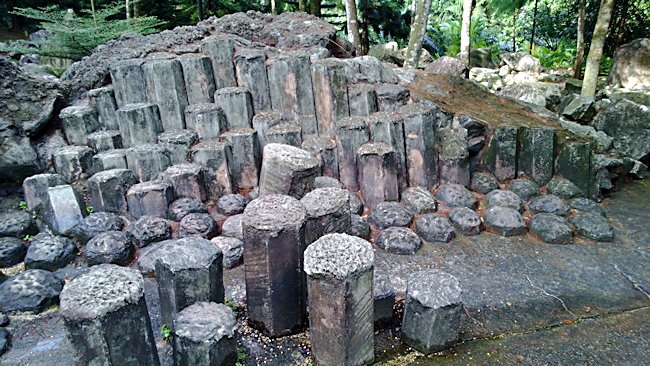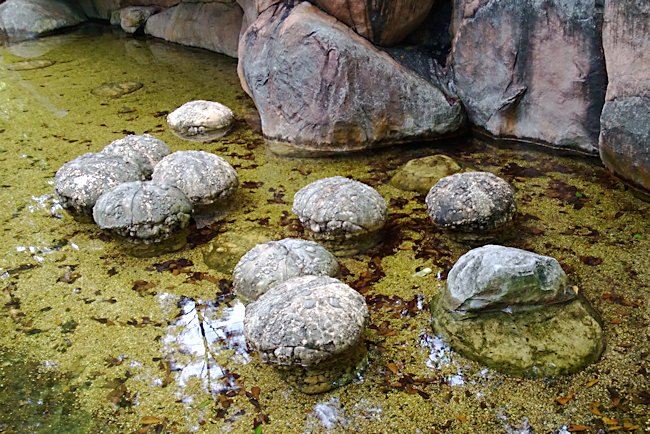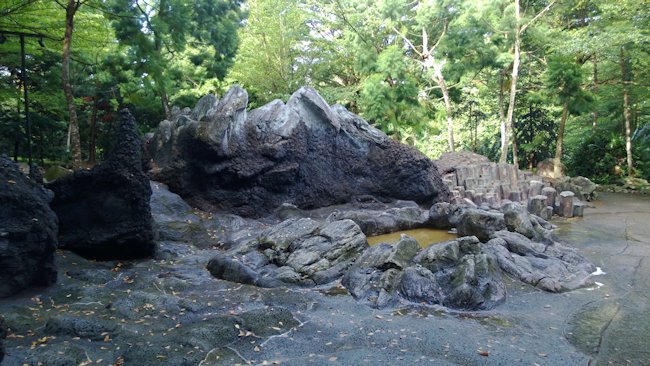Primitive Plant Life section of the Evolution Garden
The first section of the evolution garden starts when the earth was formed 4,600 million years ago after the planet had cooled down.

This is when an atmosphere of hydrogen cyanide, methane, ammonia, and water vapour developed. Oceans were formed when much of the water condensed into a liquid from its gaseous state. Nothing could survive those harsh conditions.
There is no ozone layer to block harmful ultraviolet rays from the sun, and there was no oxygen to breathe. It was just bare rock. This is what staff are portrayed by using molded concrete to simulate called lava flows, basalt hexagonal columns like you see at the Giants Causeway in Ireland and other rock outcrops.

The next section is called the beginnings of life. This is set around 3,500 million years ago and tries to show you very early plant life. Primitive bacteria started to use photosynthesis to make complex molecules by using energy light from the sun. A byproduct of photosynthesis was the production of oxygen.
As the different types of bacteria grew, so did the amount of oxygen in the atmosphere. Some also secreted calcium carbonate, which slowly developed into rock pedestals called stromatolites. These are very ancient fossils but amazingly, they are still living in areas of Australia. The garden has some mock examples in a pond.

Travel books

